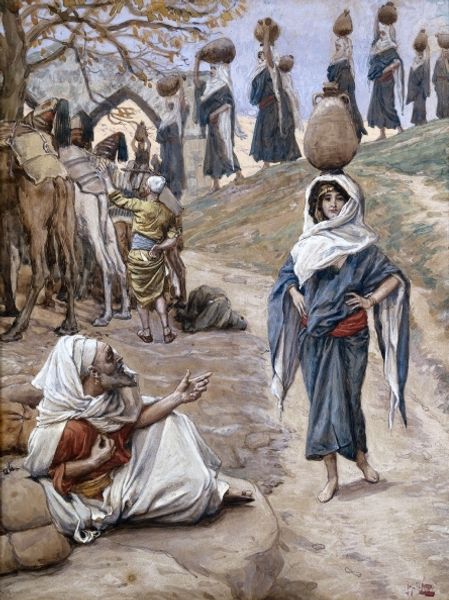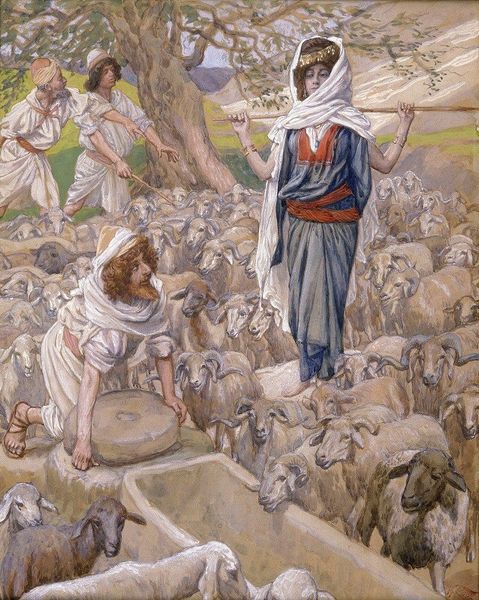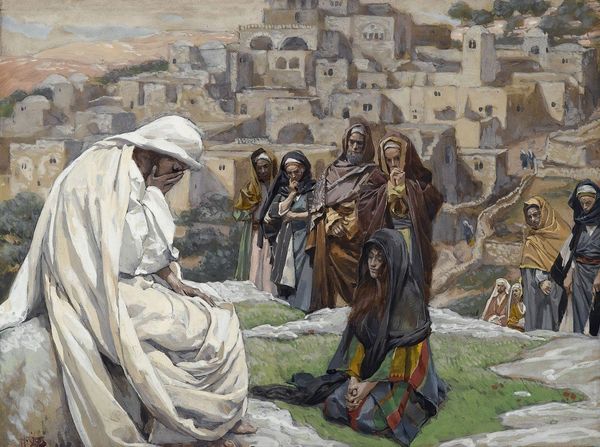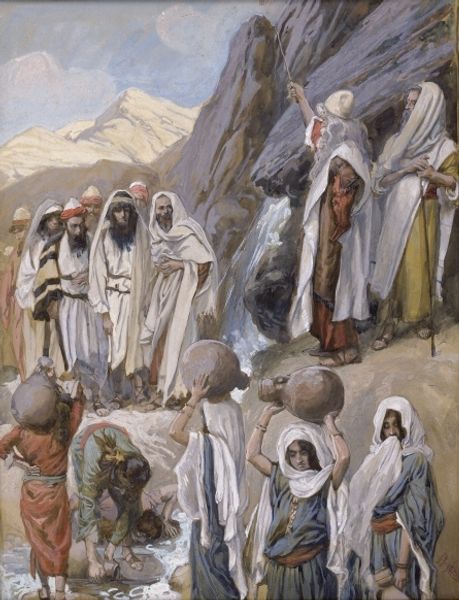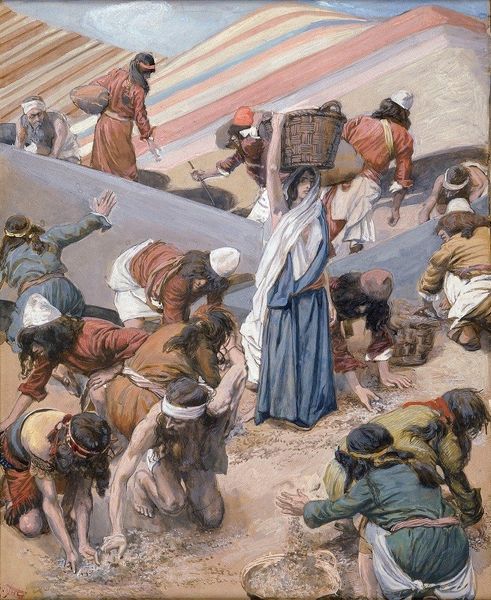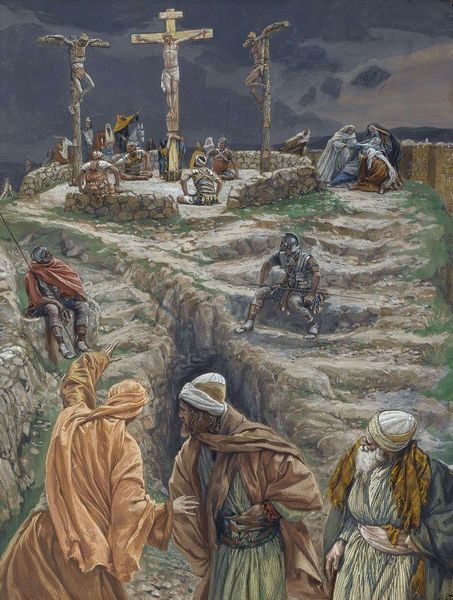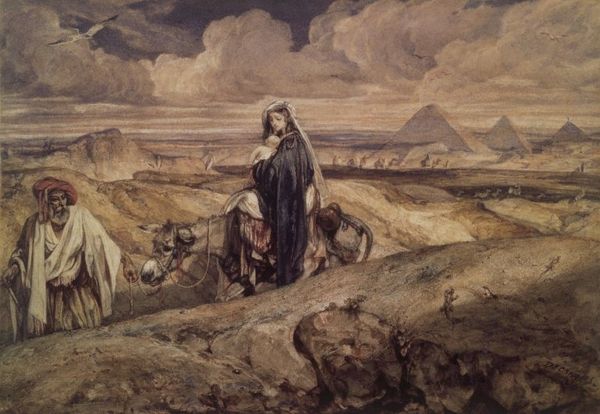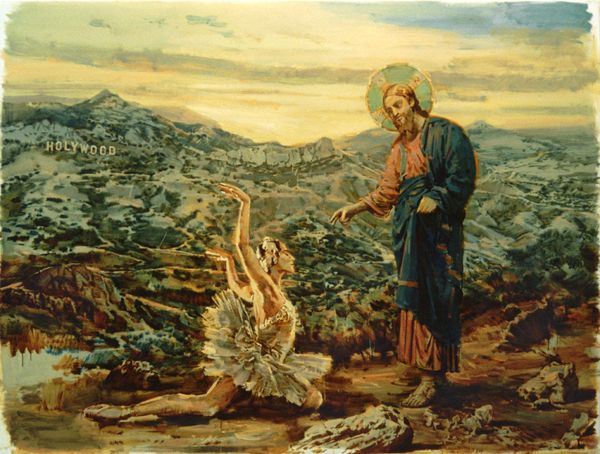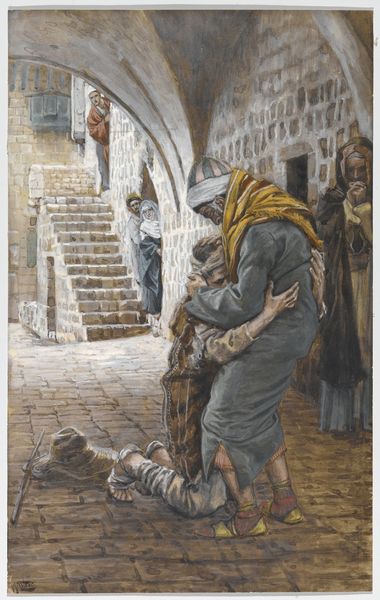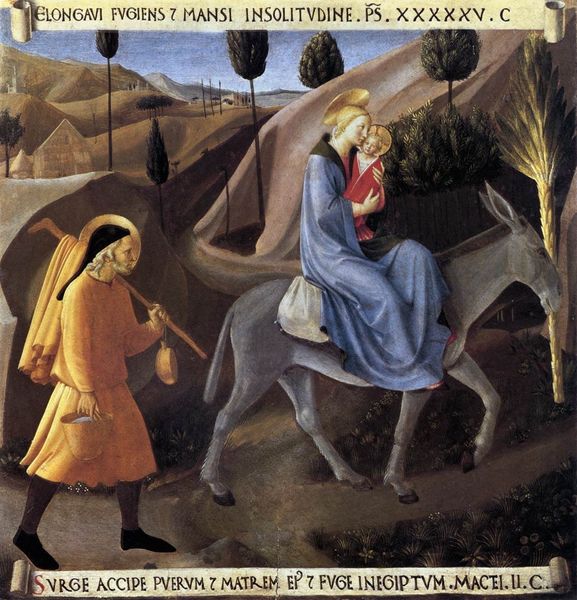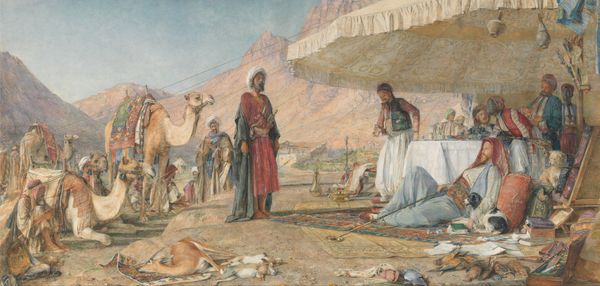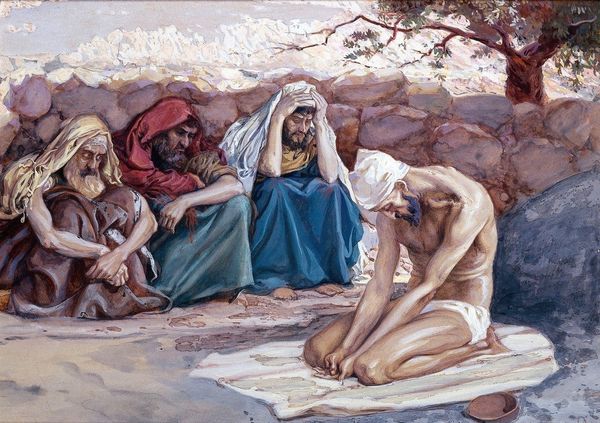
painting, watercolor
#
narrative-art
#
painting
#
landscape
#
oil painting
#
watercolor
#
genre-painting
#
history-painting
#
academic-art
#
watercolor
Copyright: Public Domain: Artvee
Editor: This is James Tissot's "Hagar Departeth From Abraham," a watercolor from around 1896-1902. It depicts a scene of departure, and there's such a sense of muted color and almost strained stillness in the figures. How do you interpret this work? Curator: Initially, observe the carefully structured composition. Note the strong vertical lines created by the tent poles juxtaposed against the stooping figure of Abraham. How do these lines guide your eye? The subdued palette—the dominance of earth tones, the blues and browns, create a formal restraint, echoing the emotional weight of the subject matter. The textures achieved through watercolor, the layering and blurring, also contribute. Do you find these elements enhancing the emotional gravity? Editor: I do. The texture in the tents, specifically, suggests instability, even frailty. But the narrative is also so explicit; does that leave much room for formal analysis? Curator: Explicit, perhaps, but not exhausted. Consider how the artist uses contrasting textures to delineate the emotional space between figures. The smoothness of Hagar's face contrasts with the more heavily worked textures of Abraham's robes, which, from a formal perspective, emphasizes the distance, the break. Are we meant to perceive it? Editor: It's subtle, but now I see it. The very dryness of the watercolor medium contributes to a feeling of aridity, mirroring the desolation of their banishment. Thank you. Curator: Indeed. It is through this careful articulation of form and composition that the narrative gains its profound impact. Recognizing these connections deepens our comprehension.
Comments
No comments
Be the first to comment and join the conversation on the ultimate creative platform.
